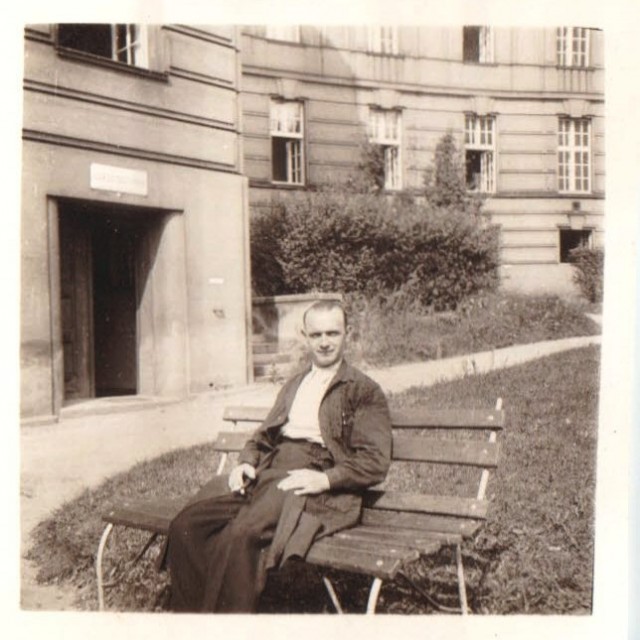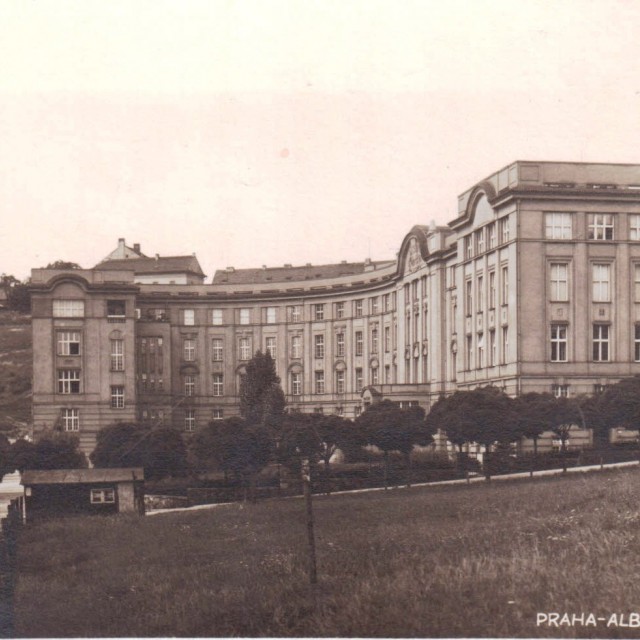He kept pigs,cut up the bodies of Wehrmacht soldiers and hid a friend
Josef Pánek, a distinctive attendant of the Forensic Institute in Albertov, during World War II illegally kept hens, pigs and even goats in the cellar of the Institute. He secretly carried out pig slaughters and exchanged the meat with the whole neighbourhood. Severe punishments were imposed on those keeping such an illegal “factory farm”: imprisonment or a concentration camp, during the Heydrichiade even death. He and his family were lucky, nobody reported them. Pánek was “playing with fire” in other ways too, his daughter recounts, a renowned literary scholar, publicist Květoslava Neradová, née Pánková. As an attendant of the Institute he had access to the autopsy room. The bodies of murdered resistance fighters and of German soldiers ragged by explosions were lying there. Many times he complied with the requests of the families of the resistance fighters to secretly give them the bodies of their murdered relatives. To make sure none of the deceased were missing, he assembled corpse torsos from the German soldiers’ torn limbs, so that no one would notice a body was stolen. In the Institute, Josef Pánek was also hiding a friend of his, who was of Jewish origin. He introduced him to his family as an uncle, who lived with them as their relative until the end of the war.
Hodnocení
Hodnotilo 0 lidí
Routes
Not a part of any route.
Comments
No comments yet.




